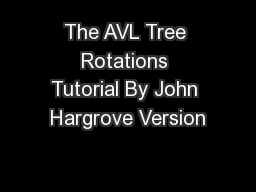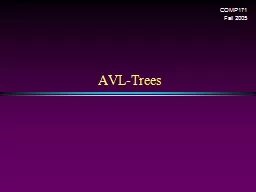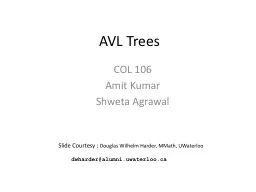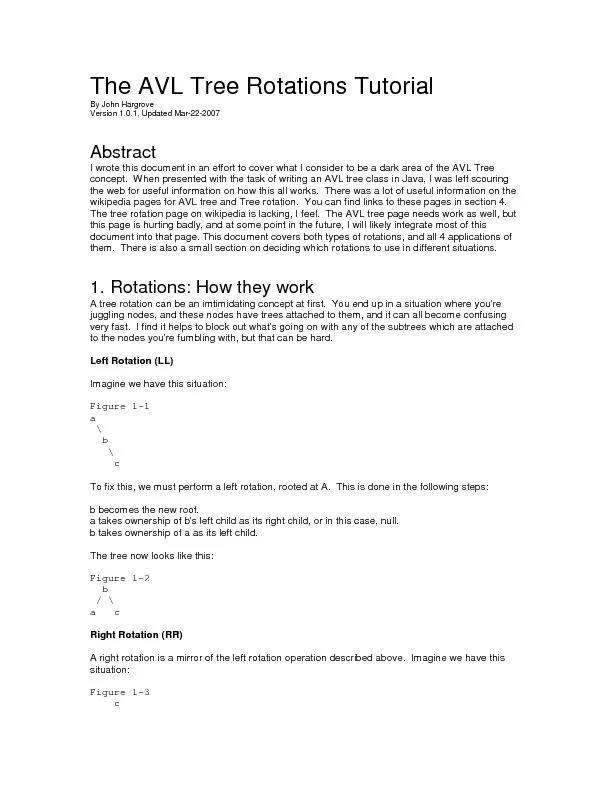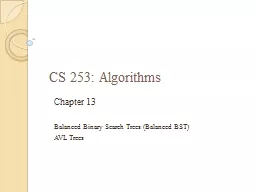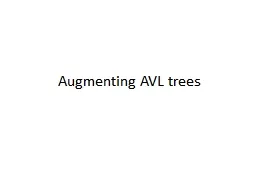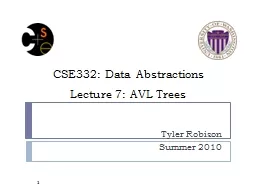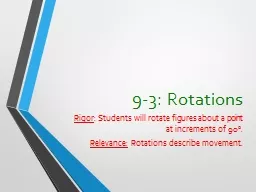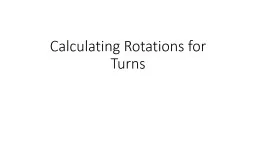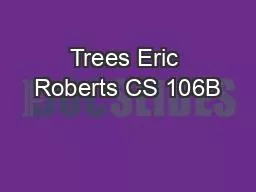PDF-The AVL Tree Rotations Tutorial By John Hargrove Version
Author : tawny-fly | Published Date : 2014-12-20
01 Updated Mar222007 Abstract I wrote this document in an effort to cover what I consider to be a dark area of the AVL Tree concept When presented with the task
Presentation Embed Code
Download Presentation
Download Presentation The PPT/PDF document "The AVL Tree Rotations Tutorial By John ..." is the property of its rightful owner. Permission is granted to download and print the materials on this website for personal, non-commercial use only, and to display it on your personal computer provided you do not modify the materials and that you retain all copyright notices contained in the materials. By downloading content from our website, you accept the terms of this agreement.
The AVL Tree Rotations Tutorial By John Hargrove Version: Transcript
Download Rules Of Document
"The AVL Tree Rotations Tutorial By John Hargrove Version"The content belongs to its owner. You may download and print it for personal use, without modification, and keep all copyright notices. By downloading, you agree to these terms.
Related Documents

